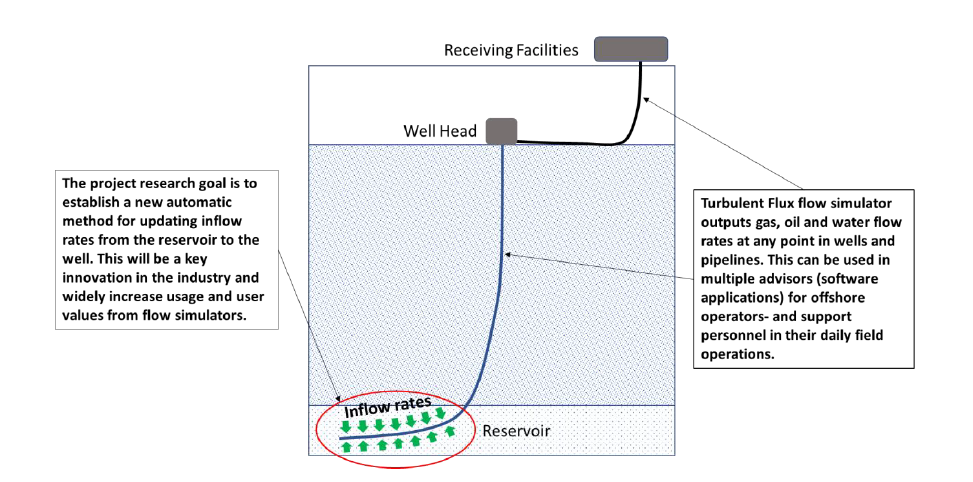For the last 40 years, Norway has been the world-leading hub for multiphase flow research and innovation. This has resulted in the development of renowned transient multiphase flow simulators. Such simulators play a key role in the design and verification of field developments. While they also support the daily operations of most oil and gas fields through offline workflows, they are rarely used in real-time systems.
To remove periodic manual maintenance and ensure confidence in real-time results, a self-adjusting technology is essential. Turbulent Flux is continuously developing its unique self-adjusting capabilities, aiming to address operational challenges such as drifting caused by changing reservoir conditions.
The flow into a well depends on reservoir characteristics and the flowing bottom-hole pressure. This is represented in an Inflow Performance Relationship (IPR), which describes how the reservoir responds to changing conditions in a well. To accurately model the flow in the production system, it is essential to have an IPR that always captures how the reservoir inflow is changing. There is a multitude of IPR models for different reservoir types and reservoir conditions, and it is a challenging manual exercise to select the IPR model to use.
PETROMAKS2 Project
The goal of this PETROMAKS2 project is to automate the selection of IPRs to ensure optimal performance by real-time systems at all times. The three-year project, awarded by the Research Council of Norway in 2019, is managed by Turbulent Flux with participation from Equinor, the Institute for Energy Technology (IFE) and the Norwegian Computing Center (NR). The plan for this PETROMAKS2 project is to create an automated workflow to select the IPR by combining physics-based models with data analytics. The project outcome will benefit the FLUX Virtual Flow Meter by improving its capabilities to address changing reservoir inflow in an automated fashion.

Digitalization allows for a data-driven approach
The vast increase and availability of data facilitated by the recent wave of digitalization allows for such a new data-driven approach in predicting reservoir inflow. The reason for the increased data availability is two-fold. Firstly, there has been an increasing amount of instrumentation of wells in the last years. Secondly, operators collect their sensor data in centralized digital platforms or historians, making large amounts of data easily available for analysis.
This PETROMAKS2 project is using this sensor data together with a combination of flow simulation models and data analysis to automatically determine which models best describe reservoir behavior and the unknown parameters in these models.
Such a hybrid approach is a completely new and comprehensive way of addressing the underlying physical processes. The outcome improves the performance of real-time applications such as the FLUX Virtual Flow Meter, fully automating the IPR selection and calibration in operations.

The project is set to be finalized by 2022. A successful completion will result in the first automated approach to inflow prediction in the market. This will help to significantly reduce the complexity of real-time multiphase simulations and make them maintenance-free.
Contact:
Lars Wollebæk
Chief Technology Officer
lw@turbulentflux.com
Syed Amjad Hussain Zaidy
Senior Project Engineer
sz@turbulentflux.com
On-Demand Webinar: Production Optimization in Oil & Gas – How Flow Simulations Can Enable Real-time Monitoring and Operations Support